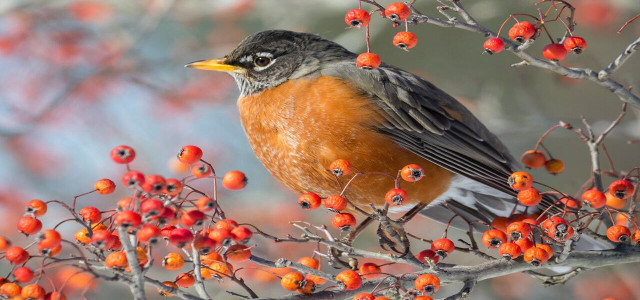If you have ever seen these sweet red-breasted birds disappear in the colder months, you might have wondered: Where do robins go in winter? Here’s the answer.
Robins are one of the most well-known and beloved birds in many parts of the world, known for their vibrant red breasts and sweet songs. While they are a common sight in gardens and parks during the summer months, many people may wonder where these birds go when the weather turns cold.
Here, we will explore the wintering habits of American and European robins, answer “where do robins go in winter?” and look at why they migrate. Additionally, we will discuss some of the challenges that robins face during the winter months and offer tips on how we can help support these birds during the colder seasons.
Where Do Robins Go in Winter?
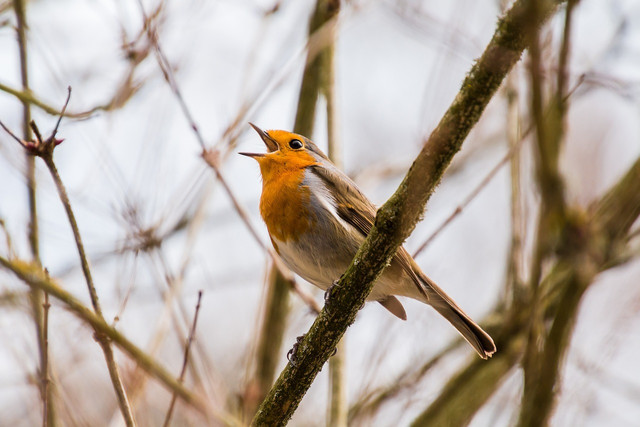


Much like other bird species, the behavior of robins depends on various factors. Where robins go in winter is likely dependent on the following things:
- Species: As we will discuss, there is a strong genetic component to migration behavior in birds. The direction they fly in and the time they migrate are largely contingent on how they evolved over time.
- Environment: Birds, like other living creatures, are the product of adaptation. This means that they adjust or become accustomed to a certain environment by adapting to survive in that climate on a biological or behavioral level. And they pass these attributes to their offspring. For instance, robins, in different countries, have a specific habitat to which they are adapted, and migration is a way for them to maintain the best ecological conditions for their survival.
- Temperature: Another aspect that’s recently come to light is temperature. Robins use summer and autumn temperatures to partially determine their migratory pattern. For instance, if temperatures suggest a mild winter, robbins may not fly as far or migrate.
For all of these reasons, robin migration can be highly variable. However, by accounting for these different factors, there are a few particular spots that scientists have been able to identify to explain where robins go in winter.
Where Do European Robins Go?



According to a scientific study of over 1000 robbins over a 50-year period, they found the following results:
- The birds measured in the study were born in the UK, and Europe (Austria, Belgium, Czech Republic, Denmark, Finland, France, Germany, Hungary, Netherlands, Norway, Poland, Spain, and Sweden).
- If a robin traveled more than 0.5 km in winter time (between September to October), this was considered migration.
- The majority of migrating robins traveled South East, wintering in the Mediterranean and North of Africa. The distance they flew was highly dependent on their starting point and the temperature there.
- Robins starting in the North West (UK, Ireland, Scandinavia, and Belgium), did not fly as far (their mean migration distance was 100km), and 42% did not migrate at all, preferring to settle slightly southeast of their original region.
- Birds starting in North East of Europe (such as Germany, Poland, and the Czech Republic) flew at least 10 times further (a mean distance of 1787 km), with the majority choosing to migrate (99.3% of robbins), and reaching as far as North Africa.
The basis for the difference in migration patterns seems to be that winter temperatures are more extreme in the North and East of Europe, though we may see these patterns change drastically in the wake of climate change.
Where Do American Robins Go?
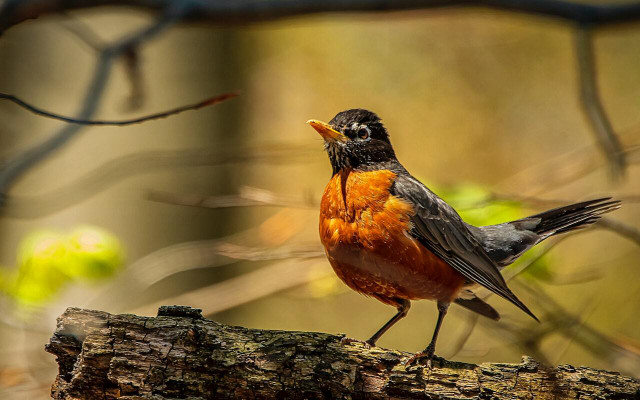


According to research, American robins, much like their European counterparts, have a preference for southeast regions, such as Mexico, Florida, and Texas.
And like European robins, their migration patterns are often determined by their initial location, the temperatures leading up to winter, and the characteristics of the species. As an overview:
- They start in various habitats across North America, namely evergreen, deciduous, and broadleaf forests, where they stay during the summer – approximately June through to September or early autumn.
- They then begin the migration, traveling a mean distance of 753 km in total.
- Interestingly, when winter ends, they don’t return home straight away. Instead, they fly northward to their breeding grounds in Canada from April to June, before returning to their home.
- The research found that over the past two decades, robins have arrived earlier and departed later from their wintering grounds, resulting in a more extended overall winter residency.
Again, they attribute this shift to the robins’ ability to adjust their migration timing in response to snow conditions, with individuals arriving earlier in areas with less snow cover in the spring – most likely due to changing climate conditions brought on by global warming.
Why Do Robins Migrate Between Seasons?
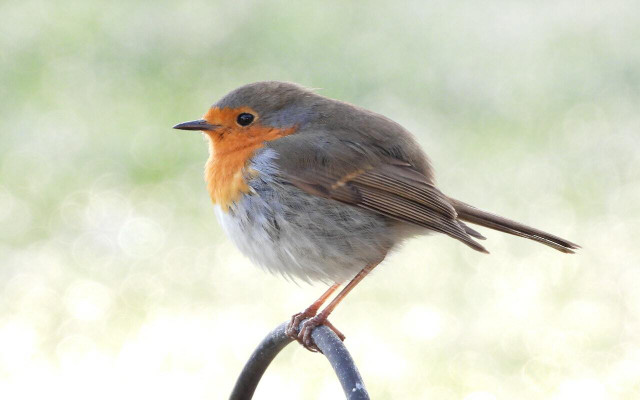


The migratory behavior of robins depends on several things, but for the most part, it is controlled by genetics.
A study in 2019 revealed that they had found the gene responsible for this behavior, suggesting that it not only tells birds when to migrate but where. Earlier scientific evidence has described this phenomenon as a biological and environmental internal ‘urge’ toward a specific direction depending on the species of bird.
According to these research findings, it is likely that natural selection has played a role in the development of this gene as, over time, genetically, birds learned that certain directions yielded a higher survival rate for their species.
The timing of migration also has a genetic component, though there is an environmental factor. Birds have a hormone that is automatically triggered by seasonal changes, such as light, temperature, and other external cues. This, similar to their internal direction system, is likely the result of years of natural selection, which have encoded their DNA with information about when it is the optimal time to leave their breeding ground – such as a lack of food in winter or more competition.
How to Help Robins in Winter
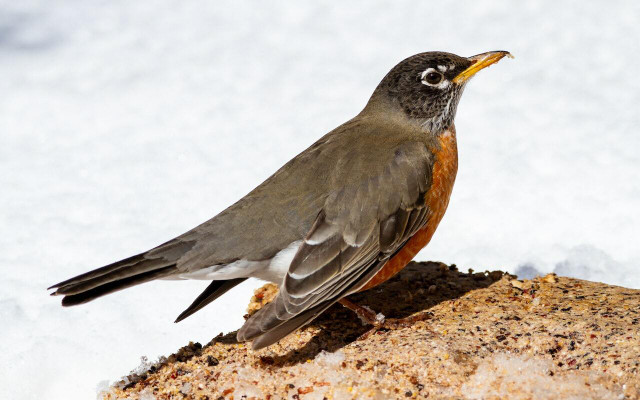


Now that we’ve answered the question “where do robins go in winter?”, it’s imperative to take a look at how we can help them. There are several ways in which we can help our feathered friends, providing food being one of the most important.
- Food: According to the RSPB, offering a variety of foods can be beneficial for robins and other birds during the winter. Leftover vegetables and dried fruits, such as raisins and sultanas, are great options for providing energy-rich snacks, while seeds, mealworms, and homemade suet can help birds stay warm during the cold months.
- Water: The Journey North explains we should also consider heated bird baths to make sure that robins have access to water in winter. You can leave out a small container of lukewarm water to help provide water but without encouraging bathing, as the water can freeze on their wings, making it difficult to fly.
- Shelter: In addition to providing food, we can also create a suitable habitat for robins and other birds. The Smithsonian Institution suggests leaving leaf litter, and natural debris, like logs and twigs, can provide shelter for birds and other wildlife during the winter. You can simply sweep this debris into a corner so that birds can stay warm in the winter months. It can also help shield invertebrates that the robins can feed on.
By taking these simple steps, we can help support robins and other birds during the colder seasons when food and shelter can be scarce.
Read more:
- Why Do Birds Chirp at Night?
- The 6 Coolest Wild Bird Sanctuaries in the US
- Where Do Hummingbirds Go In Winter? Why?
Do you like this post?






